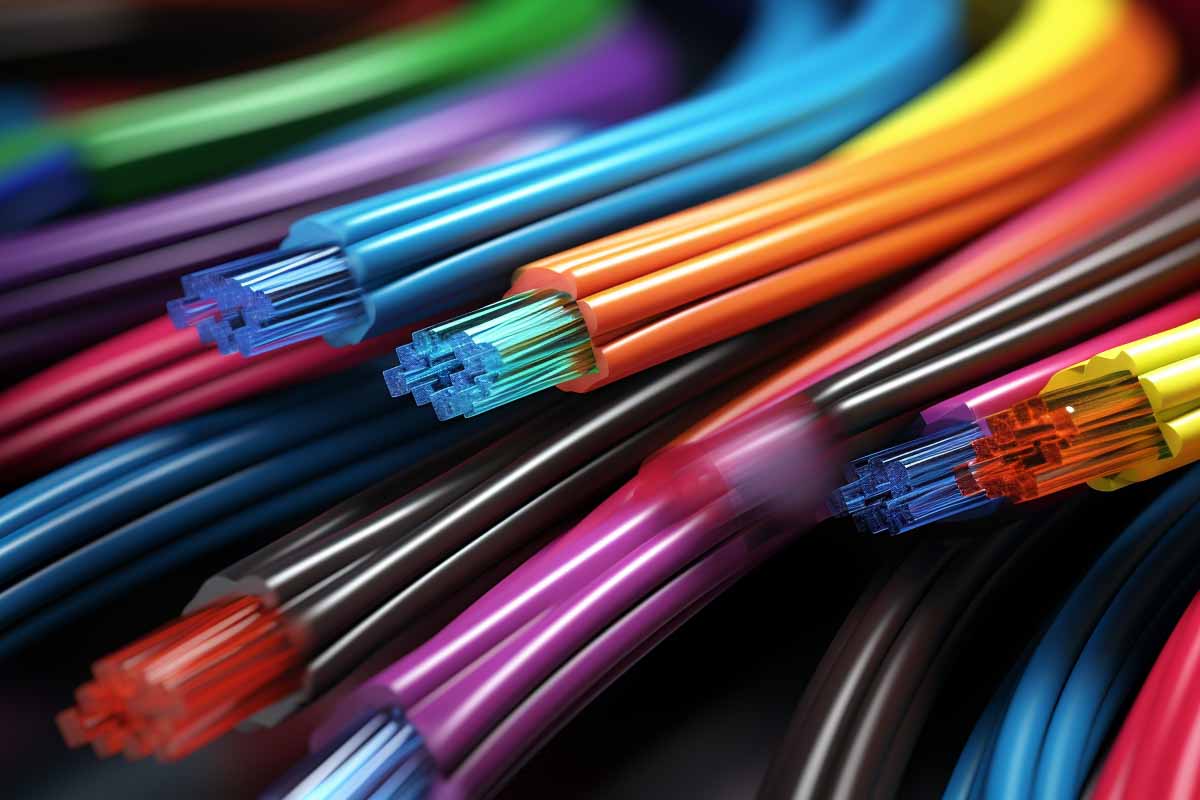Fiber Optic Cable Types: How to Select the Best Option for Your Network
Introduction: Understanding the Importance of Fiber Optic Cables in Modern Networking
In today’s digital age, the backbone of high-speed, reliable internet connectivity relies heavily on fiber optic technology. As organizations and service providers strive to meet increasing data demands, understanding the different types of fiber optic cables becomes essential for designing and maintaining efficient networks. Fiber optics offer unparalleled advantages over traditional copper cables, including greater bandwidth capacity, longer transmission distances without signal degradation, and immunity to electromagnetic interference, which ensures cleaner signals and enhanced security.
The rising demand for scalable, future-proof network infrastructure makes selecting the appropriate fiber optic cable a critical decision. Whether deploying a new network or upgrading an existing one, choosing the right fiber type impacts performance, cost-efficiency, and longevity. This comprehensive guide explores the various fiber optic cable types, factors influencing their selection, and practical advice for building a robust, scalable network aligned with current and future technological needs.
Overview of Fiber Optic Cable Types
Fiber optic cables come in two primary categories—single-mode and multi-mode—each designed to serve specific applications based on their physical and optical properties. Understanding their fundamental differences helps network planners and engineers determine the most suitable option for their unique requirements.
Single-mode fiber optic cables feature a small core size that allows light to travel in a single ray or mode, making them ideal for long-distance communication. Conversely, multi-mode fibers have a larger core that enables multiple light modes, making them suitable for shorter distances with high data throughput. Both types differ significantly in core size, light transmission mechanisms, and distance capabilities, influencing their application scope and performance characteristics.
Single-Mode Fiber Optic Cables
Single-mode fiber optic cables are designed with a tiny core diameter, typically about 8 to 10 microns, which permits the transmission of a single light mode. This design minimizes signal loss over long distances, making single-mode fibers the preferred choice for telecommunications, internet backbone connections, and data centers that require high bandwidth over extensive distances. The smaller core ensures that light travels straight through without bouncing, reducing dispersion and attenuation.
Optimum applications for single-mode fibers include long-haul telecommunications, intercontinental fiber links, and large-scale data centers where maintaining signal integrity over hundreds or thousands of kilometers is essential. Their advantages include minimal signal attenuation, higher bandwidth capacity, and the ability to support future upgrades with advanced optical technologies. However, these fibers are more delicate, requiring precise handling, and the associated connectors and equipment tend to be more expensive, reflecting their advanced performance capabilities.
Multi-Mode Fiber Optic Cables
Multi-mode fiber optic cables feature a larger core diameter, typically around 50 to 62.5 microns, allowing multiple light rays or modes to propagate simultaneously. This multi-path transmission makes multi-mode fibers well-suited for shorter distances, such as within buildings or campus environments, where high data rates are needed over limited spans. They are easier to connect and splice, making installation and maintenance more straightforward and cost-effective.
The primary applications of multi-mode fibers include local area networks (LANs), data centers, and enterprise networks. They are advantageous for their lower initial cost and compatibility with many existing hardware components. However, over longer distances, modal dispersion causes the light rays to arrive at slightly different times, which can limit bandwidth and data integrity. As a result, they are generally recommended for applications where the transmission length does not exceed a few kilometers.
Subtypes of Multi-Mode Cables
Multi-mode fibers are categorized into several OM (Optical Multimode) levels, primarily OM1, OM2, OM3, OM4, and OM5, each distinguished by core size, bandwidth, and distance capabilities:
- OM1: Core diameter of 62.5 microns, suitable for short distances up to 300 meters at 1 Gbps.
- OM2: Core diameter of 50 microns, supporting distances up to 550 meters at 1 Gbps.
- OM3: Laser-optimized, 50-micron core, supports 10 Gbps over 300 meters, ideal for high-speed data centers.
- OM4: Enhanced laser-optimized, supports 10 Gbps over 550 meters, suitable for high-bandwidth enterprise applications.
- OM5: Emerging multi-mode fiber designed for multi-wavelength transmission, supporting higher capacities and flexible network architectures.
The significance of laser-optimized fibers like OM3, OM4, and OM5 lies in their ability to support higher data rates over longer distances, making them a strategic choice for future-proofing networks. Selecting the appropriate OM level depends on specific network needs, including speed, distance, and scalability considerations.
Additional Considerations in Fiber Type Selection
Choosing the right fiber optic cable involves evaluating several critical factors beyond the basic types. These considerations ensure the network’s scalability, cost-effectiveness, and durability align with organizational goals and operational environments.
Future-proofing is paramount in today’s rapidly evolving technological landscape. Selecting fiber cables with ample capacity and upgrade paths, such as multi-mode OM4 or single-mode fibers, enables seamless scalability. Cost considerations encompass initial investments in cables, connectors, and equipment, balanced against ongoing operational expenses and potential upgrade costs. While single-mode fibers tend to be more expensive initially, their higher performance over long distances can offer better value over time.
Environmental factors also play a crucial role. Indoor versus outdoor deployment impacts cable selection—outdoor fibers need to withstand moisture, UV exposure, and physical stress, necessitating special coatings or protective jackets. Flexibility and installation complexity influence choice, especially in constrained spaces or challenging terrains. Compatibility with existing infrastructure ensures smooth integration, avoiding costly reconfigurations or hardware replacements. Lastly, adherence to industry standards and certifications guarantees performance, safety, and interoperability, aligning with best practices recommended by organizations such as IEEE and ISO/IEC.
Factors Influencing Fiber Optic Cable Choice
The decision-making process for fiber optic cables hinges on several interconnected factors that collectively determine the optimal choice for a specific network environment.
Network Distance and Bandwidth Requirements
Understanding your current and future data transmission needs is fundamental. For long-distance applications—such as connecting data centers across cities or continents—single-mode fibers are generally preferred due to their minimal signal loss and high bandwidth capabilities. For shorter distances within buildings or campuses, multi-mode fibers often provide a cost-effective solution with sufficient performance. Accurately assessing the maximum cable length needed and the required data throughput helps prevent bottlenecks and ensures reliable service delivery.
Budget Constraints and Cost-Effectiveness
Financial considerations influence fiber selection significantly. While single-mode fibers and their associated equipment tend to be more expensive upfront, their superior performance can reduce maintenance and future upgrade costs. Conversely, multi-mode fibers offer lower initial costs and simpler installation processes, making them attractive for organizations with tight budgets or shorter-term plans. Analyzing the total cost of ownership—including installation, equipment, maintenance, and potential upgrades—enables informed decision-making that aligns with organizational financial strategies.
Installation Environment and Physical Conditions
The physical environment where fibers will be deployed impacts durability and performance. Indoor installations benefit from cables designed for controlled conditions, while outdoor environments demand ruggedized fibers resistant to moisture, temperature fluctuations, and physical damage. Environmental protections like waterproofing, UV resistance, and flame retardancy extend cable lifespan and safety. Handling considerations, such as cable flexibility and ease of splicing, influence installation complexity and labor requirements.
Compatibility with Current and Future Technologies
Ensuring compatibility with existing hardware—connectors, transceivers, and switches—is essential to avoid costly replacements. Selecting standardized connectors like LC, SC, or ST facilitates interoperability and simplifies maintenance. Planning for future technological advancements, such as higher-speed protocols or new optical components, involves choosing scalable fiber types and modular hardware. This forward-looking approach helps protect investments and ensures the network can evolve with emerging standards and demands.
Regulatory and Industry Standards
Compliance with industry standards such as IEEE 802.3, ISO/IEC 11801, and TIA/EIA-568 guarantees that the fiber optic system meets safety, performance, and interoperability benchmarks. Certification requirements help verify quality and reliability, especially for critical infrastructure. Adhering to best practices in installation, testing, and documentation ensures long-term network stability and facilitates troubleshooting and future upgrades.
How to Select the Right Fiber Optic Cable for Your Network
Making an informed choice begins with a detailed understanding of your network’s current and projected needs. Conduct a comprehensive assessment that includes evaluating existing infrastructure, anticipated growth, and performance expectations. This process helps identify whether single-mode or multi-mode fibers are best suited, and which OM level (for multi-mode fibers) aligns with your bandwidth and distance requirements.
Mapping out physical routes and calculating maximum cable lengths clarify the technical specifications necessary for your deployment. Consider environmental conditions—indoor or outdoor—and installation constraints, such as space limitations or harsh environmental factors. Balancing cost considerations with performance needs involves analyzing upfront expenditures against operational efficiencies and future scalability. Engaging with industry standards and certified suppliers ensures compliance and quality assurance.
Consulting with network specialists and conducting pilot tests can provide valuable insights, reducing risks associated with large-scale deployment. Small-scale trials help identify potential issues, gather user feedback, and validate performance claims. This iterative approach ensures the final decision aligns with your strategic goals, providing a robust, reliable, and future-ready network infrastructure.
Conclusion: Making an Informed Choice for a Robust and Future-Ready Network
Choosing the right fiber optic cable is a pivotal step in building a high-performance, scalable, and future-proof network. Key factors such as distance, bandwidth needs, installation environment, and budget must be carefully evaluated to select the most suitable fiber type—be it single-mode or multi-mode—and the appropriate specifications within those categories. Aligning your selection with industry standards and anticipating future technology trends ensures long-term operational success.
Investing in the right fiber optic infrastructure not only enhances current network capabilities but also positions your organization to adapt seamlessly to evolving digital demands. Regular review and upgrading of your fiber network, guided by technological advancements and changing organizational needs, will maximize your investment and ensure sustained performance. IT professionals and network planners are encouraged to leverage resources like ITU Online Training to deepen their understanding and stay abreast of emerging best practices in fiber optic technology.










